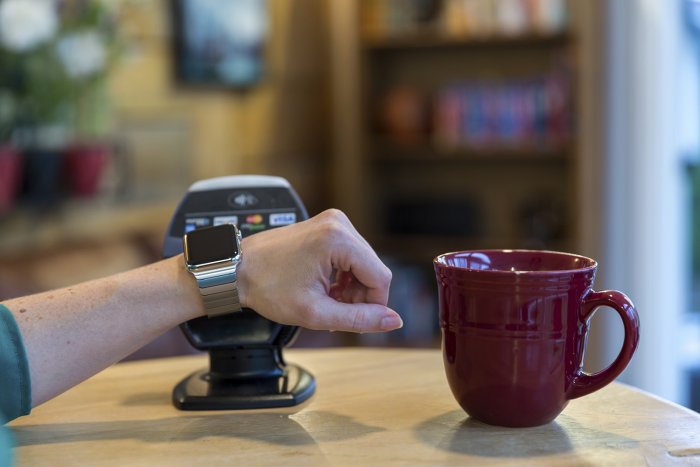
By developing instant and seamless payments, in particular between individuals, the Fintechs are making major waves on the payments market. And in so doing, have gained significant market share. In some countries, banks and financial institutions are biting back, in the hope of regaining lost market share.
Headed for customer-centric payment services
The rise of e-commerce has changed the way consumers behave and is now impacting the payments market. Customers under 30 expect transactions that are quick, easy, and personalized. The payment function has become a differentiating factor in the performance rating of merchant sites, significantly influencing the conversion rates recorded by e-commerce sites.
It is essential that the types of payment methods offered, the methods used to showcase and operate them, and the tools deployed to prevent and combat fraud, be suited to the needs of customers and to the specific challenges of each sector.
A regulatory framework now more conducive to innovation
The European PSD2 (Payment Services Directive 2), which came into force in January 2018, furthermore widely encouraged innovation, by making this standardized payment market accessible to players other than financial institutions.
New “open banking” services are mushrooming: account aggregation, expense management, payment by mobile between individuals, etc. According to PWC, 64% of adults will adopt at least 1 such service by 2022.
Internet giants: already originating innovative payment solutions
Innovative payment solutions introduced by non-financial players, such as the GAFA, Alibaba and Tencent, have completely changed the way customers experience payment. These players have been quick to capitalize on the potential offered by big data analytics and the Cloud to offer new and numerous services. With their fine-grained knowledge of their customer base, they are able to deftly well to stay in control and take advantage of cross-selling and upselling opportunities for services and products.
More and more frequently, they are seen as natural partners by FinTechs. With their payment solutions, AliPay for Alibaba and WeChat Pay for Tencent, Chinese e-commerce operators should be taken very seriously by all players in the international payment ecosystem.
The strategic challenge of P2P payments
P2P (“Peer-to-Peer”) payments are transactions that enable users to transfer funds between individuals, most often via their mobile. This method of transferring money is increasingly appreciated, as it makes it possible to receive money immediately, without bank charges, just by exchanging a telephone number.
For the banks, this is a strategic and volume-enhancing activity, not to be left to the competition. Their image and continued relationship with their customers are in the balance.
P2P Payments, a growing market
The P2P payment market has experienced strong growth in recent years through the emergence of platforms such as Venmo, Zelle, Cash App (formerly Square Cash) in the United States or, for instance, Lydia in France.
In the United States, 82.5 million people at least 18 years of age in 2018 were active users of P2P payment (at least one transaction per month), i.e. 35% of mobile phone owners [1]. This figure is expected to reach 96 million in 2019, an increase of 16%. As for millennials, 50% of them use P2P payment services at least once a week in the United States [2].
Main P2P payment services in the United States and France

Note: Although Venmo has been owned by PayPal since late 2013, I consider Venmo a FinTech with its own app.
Banks’ competitive advantages: an established customer relationship and trust
Generally speaking, there are two ways to carry out a P2P transaction.
The first consists of using a third-party processor to designate the account involved in the transaction or payment card to withdraw or receive funds. One of the challenges of this type of service lies in its operating in silo: users are, in a sense, cut off from their bank, insofar as most of these services are independent from the banks’ sites (or applications). In addition, the fact that funds can be held on a P2P account creates a new banking relationship, which most users would prefer to avoid.
The other method for P2P payment, when available, consists of using a bank’s website or application, where the issuing customer’s account is registered. The receiving party does not need to have a bank account hosted in the same bank as the issuer. This method spares the user from having to create a P2P account on a separate application.
In this second instance, banks can derive benefit from the trust placed in them by users. The figures are there to back this up: the average transaction amount for Zelle users – a service integrated into the applications of some thirty American banks – is $350, an amount much higher than the $40 transferred on average to Venmo, a third-party application.
The response of traditional French banks
Fintech partnerships and takeovers
Faced with these new players and services and their rapidly-growing market share, some banks are making major investments in digital channels and are exploring partnerships with specific Fintechs to co-create, develop and identify new sources of income.
Société Générale, namely, became the first French bank to acquire a Fintech in 2015 (Fiducéo) and develop close ties with the global ecosystem in the form of partnerships or investments. More recently, the bank once again invested in TAGPAY, gained a stake in REEZOCAR and announced the acquisition of Fintech LUMO.
Collaboration between banks to launch competing services
In response to the rise of Lydia, the French fintech specializing in the P2P payment market, most French banks opted to extend Paylib to the payment service between individuals, echoing Zelle in the United States.
Initially launched in 2013 to counter PayPal on the French online payment market, Paylib is an interbank platform developed as an economic interest grouping by 11 French banks. This platform expanded to P2P payment in late-2018. Instant P2P payment is expected to be available at all member banks by September 2019.
Note that the customer’s contact person remains the bank and its application (there is no Paylib application). As shown above, while this may offer an advantage, a major drawback remains: Paylib does not unify the customer experiences; the P2P payment user experience and pricing remain different from one bank to the next.
Are financial services headed for “platformization”?
Thanks to open APIs, financial institutions can now distribute products/services through new channels. Consequently, we are seeing a “platformization” of financial services through the emergence of specialized marketplaces.
Originally launched by Viva Républica (a South Korean Fintech) in 2015 as a P2P payment platform, Toss is now a financial marketplace. With partnerships with more than 25 South Korean financial institutions, Toss allows consumers to access and compare multiple payment, investment, loan and insurance solutions in a single place.
As at end-2018, Toss had 10 million users or 20% of the population of South Korea, and $18 billion in transactions. Toss’s ambition is to become “the Amazon of the financial services industry”. During its last fund-raising operation amounting to $80m in December 2018, Toss was valued at $1.2 billion, and thus gained unicorn status.
Analysis and recommendations
Open banking benefits the sector as a whole
It is legitimate that Fintechs already benefiting from a substantial customer base should seek to transform into real marketplaces by creating partnerships with various financial institutions. It is also in the interest of traditional players to be present on those platforms (in particular to access a new customer target).
Reflections on Open Banking conclude that opening up data would benefit the end consumer. In particular, this allows it to compare the services offered by different banks.
However, data sharing, customer relations and security aspects are points that need to be clarified upstream by stakeholders.
What stance could banks adopt?
A more proactive bank could remain a central figure by positioning itself as the owner of the platform and not just as the producer. It would then provide its customer data to third-party organizations (Fintechs in particular) which would then offer customers a service that is better-suited and/or less costly.
The banking application would then be a place where customers could of course access the bank’s banking and financial services, but also a range of partner banking and financial services.
Why not consider, as AliPay or WeChat Pay have done, offering day-to-day management services using payment such as booking services (taxis, restaurants, hotels, aircraft, etc.)?
The bank’s brand would then be at the fore, enabling a whole range of transactions to be carried out, rather than being confined to payment tasks that are often characterized by much less visibility.
[1] source: eMarketer
[2] Source: The Economist, May 2019
Read Sofrecom’s latest whitepaper on the challenges and opportunities of digital financial services





